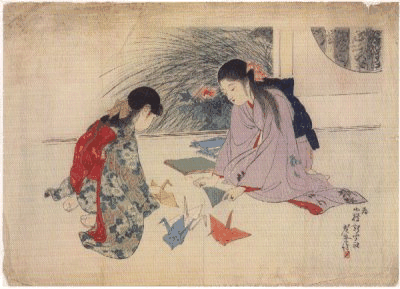History of Origami
The Origins of Origami
Origami, the art of folding paper to make a completely new creation, can often be seen as a symbol of Japanese tradition. Its rich history spread across the globe over the centuries, forming new creativity and innovation. From ceremonial roots to modern designs, origami tells the story of how a simple sheet of paper can hold infinite possibilities.
Paper was invented in China around 105 CE during the Han Dynasty, and with this invention, came the first opportunities for folding. Early Chinese traditions included folded paper objects used in ceremonies, such as folded offerings burned at funerals to honor ancestors.
By the 6th century, paper was spread to Japan by Buddhist monks. Folding transformed into a refined art and often carried spiritual significance. Shinto ceremonies in Japan utilized paper decorations called gohei as offerings to deities, symbolizing purity.
Evolution of Origami:
For centuries, origami was passed down from generations with simple traditional models like boats, frogs, and cranes. But in the 18th century, the first printed instructions began to appear. By the 19th century, origami began to be taught in Japanese schools as part of early education. Innovators like Akira Yoshizawa in the 20th century elevated origami; Yoshizawa developed modern folding techniques, introduced diagramming systems that are still used today, and treated origami as sculpture rather than something that is made during free time. His influence spread across the globe, inspiring new generations of folders and pushing boundaries of complexity.
Now, origami has surpassed tradition. Mathematicians study origami for insights into geometry and engineering. Scientists use folding principles in everything from designing solar panels for spacecraft to foldable medical devices. Artists continue to push limits, crafting hyper-realistic animals, complex sculptures, and architectural designs, all from a single sheet of paper.
Origami began as a ceremonial and symbolic practice, but today, it is a universal art form that bridges cultures, disciplines, and generations. What started with folding offerings and cranes has grown into a global movement that blends centuries worth of traditions, innovations, and imaginations.
A sheet of paper may look plain ordinary, but in the hands of origami, it can become an extraordinary creation that holds endless possibilities.


